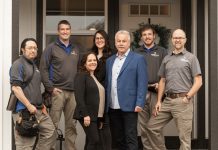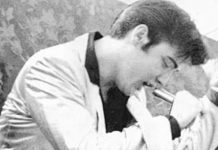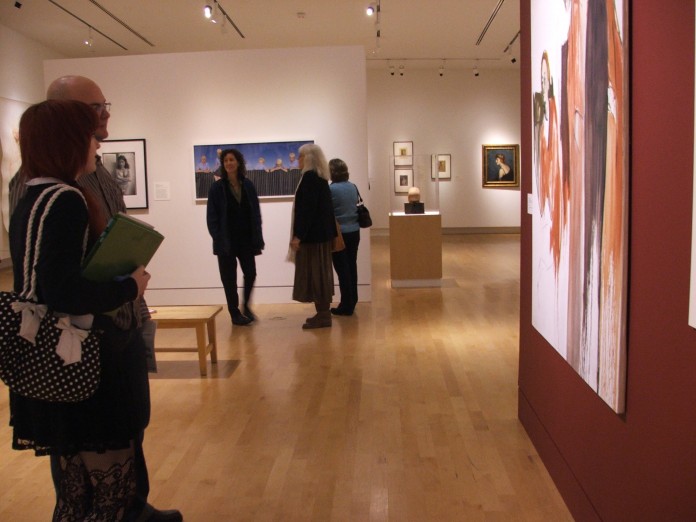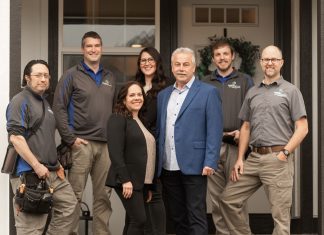Submitted by Tacoma Art Museum
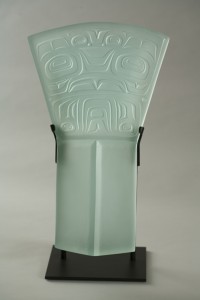
Tacoma Art Museum (TAM) recently added 13 significant works to its collection. Ten works are by Northwest artists, including a major work by glass artist Preston Singletary, irreplaceable photogravures by Adelaide Hanscom, a rare oil painting by John Davidson Butler, and TAM’s first works by Milt Simons. The Haub family also gifted three additional paintings to the museum’s western American art holdings.
“It is always exciting to welcome new works into the collection,” says Stephanie Stebich, Executive Director of Tacoma Art Museum. “We are guided by TAM’s collection policy when looking to acquire significant works of art to benefit the public. We are grateful to the generous donors who have given these important works and who continue to support the growth of TAM’s collection.”
Milt Simons 1957 “Introspection” enters the collection as a gift from the artist’s family, and TAM purchased his 1973 “Self Portrait.” Both works were recently on view at Tacoma’s B2 Fine Art Gallery as part of the show “The Black Aesthetic Collection.” Born and raised in Seattle, Simons was a noted African American musician and composer, educator, poet, and dancer, in addition to being a painter. He attended and later taught at the Burnley School of Art in Seattle and also trained at the Art Students League in New York City. He established galleries in Seattle and San Francisco, both noted for the integration of live jazz performances with art exhibitions. He and a colleague later formed Seattle’s Central Area School of the Performing Arts (CASPA).
Simons believed that music, art, and spirituality were part of a continuum. The monumental “Introspection,” at 6’6” wide and 5’ 8” tall, depicts a flute player suspended above a moody Seattle skyline pulling tendrils of energy from the city into a gathering web. In his “Self Portrait,” the colors surrounding him represent his painting palette as well as the building blocks for his musical compositions.
William Morris’s elegant 1979 “Pink Vessel” (a gift of artist Tom Wilson) is an example of his early work. Morris is considered a studio glass innovator, particularly in his treatments of surface texture, and museums across the world collect his glass sculptures. He was educated at California State University in Chico and at Central Washington University in Ellensburg. Early in his career he was a gaffer (master glassblower) for Dale Chihuly. Morris draws inspiration from the natural world, ancient societies, and Native American art and culture.
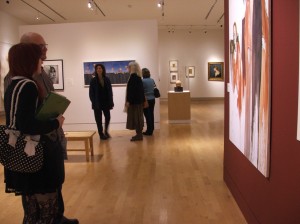
Preston Singletary has been working in glass since 1982, fusing European glass blowing traditions with designs drawn from his Tlingit heritage. He learned to work with glass alongside Northwest artists such as Dante Marioni and Benjamin Moore as well as masters of the Venetian tradition, and he studied Scandinavian design at Kosta Boda in Sweden. He credits his mentor Northwest Coastal artist Joe David with helping him better express his own Native heritage through his art. Singletary’s works touch upon themes including transformation, animal spirits and shamanism. TAM is delighted to acquire his 2001 contemporary sculpture “TINNA” (a gift of noted Northwest art collectors Herb and Lucy Pruzan).
Tacoma Art Museum has acquired five irreplaceable photogravures by early 20th-century pictorialist Adelaide Hanscom. An Oregon native, Hanscom studied art and design at the University of California and the Mark Hopkins Institute of Art (now the San Francisco Art Institute). Her San Francisco studio was lost to fire in the 1906 earthquake disaster; she relocated to Seattle, established a second successful photography studio, and won the competition to design the emblem for the Alaska-Yukon-Pacific Exposition held in Seattle in 1909. Her most prominent project was a 1905 commission to illustrate a lavish edition of “The Rubaiyat,” a collection of poems by the medieval Persian poet Omar Khayyam. Hanscom’s images for the book feature scenes with figures in costume, inspired by the poetry. The original plates used to print the photogravures were destroyed with the artist’s San Francisco studio.
A 1915 landscape by leading Northwest impressionist painter John Davidson Butler strengthens the museum’s early Northwest painting collection. Butler’s oil paintings are rare; only about 20 have been located. He studied art privately and at the University of Washington before traveling east, and then on to study in Paris and Munich. In 1916, he began teaching at Cornish College of the Arts in Seattle. He received numerous commissions for murals in Seattle and elsewhere. Butler was also a member of the Seattle group called The Triad, dedicated to exploring progressive art practices.
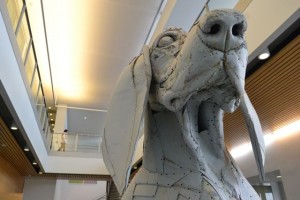
Three contemporary western American paintings join TAM’s Haub Family Collection, contributed by Georg Haub, including Jim Wilcox’s1987 “Oxbow Storm,” Jim C. Norton’s 1990 “Through The Rye-Georg Haub,” and a 1998 Ron Stewart painting, “Warm Homecoming.”
“The number of works added to the collection varies annually,” says Margaret Bullock, Curator of Collections and Special Exhibitions. The Collections Committee and Board of Trustees vote on accepting the new works, based on the recommendations of the museum’s director and curators. “We plan to have these new acquisitions on view soon and look forward to sharing them with the community.”
For more information about TAM, visit TAM online.

